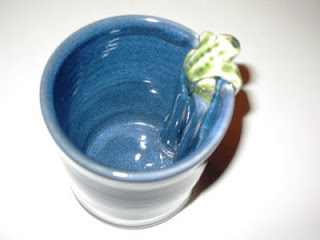Calculus fans that we are, we have learned how to maximize sleep while minimizing our weekday morning routine. S and I get up at 7:45; we wake E up at 7:50 and consent to "just one more minute" before forcing him out of bed at 7:55. He gets dressed ("hurry up dude, it's 8:00!"), brushes his teeth ("hurry up dude, it's five past eight!"), eats a leisurely breakfast ("dude, focus! focus!"), packs his backpack ("yo, dude!"), and slides on his already-tied shoes ("dude, we're going to be late!") in time for us to pull out of the driveway by 8:17. We turn into the school parking lot at 8:27, which gives him three full minutes to walk to his classroom and still be on time. Surely two of those minutes could have been spent sleeping.
The consequence of this carefully honed routine is that E spends the ten-minute drive to school staring vacantly out the car window, while I'm still pumped up on the adrenaline it took to get us out the door. Occasionally we'll exchange pleasantries about the weather or analyze another driver's crappy driving (a gift passed from my father to me and now from me to my son), but usually conversation is minimal. "I'm tired," E explains, when I nudge him to talk. I understand: it takes time to get the mental wheels moving after you've been asleep for 10.5 hours.
Then a school assignment injected some verve into the morning drive: E had to memorize the Preamble to the U.S. Constitution, so we learned the
Schoolhouse Rock version together, and spent two weeks singing it on the way to school. When we got to the point where we could both recite it without singing, and without pausing after "ensure domestic tranquility-ee-ee-ee [2 3 4]," it was time to move on.
"You need to learn some poetry," I declared. "If you can memorize the preamble, you can learn some poetry."
--"Do I have to?"
"Yes," I said. E still hasn't figured out that he doesn't have to do everything I tell him.
--"No."
"Yes. Do it. It'll be fun!"
--"Uhhh..."
"Here, repeat after me."
I chose a classic to start him off:
Humpty Dumpty sat on a wall.
At three o'clock he had his great fall.
The King set his time machine back to two;
Now Humpty's together and good as new.
After two attempts, he had it down. "There, OK, I'm done," he said, and went back to vacant staring.
The next day we moved on to another rhyme from
The Space Child's Mother Goose:
Little Jack Horner
Sits in a corner
Extracting cube roots to infinity.
An assignment for boys
To minimize noise
And produce a more peaceful vicinity.
Done. Easy. The next day, it was time to pull out the big guns.
"OK dude," I said, "it's time to learn 'Jabberwocky.'"
--"But I already learned some poems."
"Yes--and they were fun, weren't they? You're doing great! Now you need to learn 'Jabberwocky.' Ready?"
--"No. Why do I need to learn it?"
"Because you know I'm going to recite it over and over again until you try."
By the time we pulled into the school parking lot, he had a good start on the first stanza, but he was still skeptical.
--"So why do I need to learn this?"
"It'll give you something to say at parties when you don't have anything else to say. Trust me, it's very useful."
It only took another two days before he got tired of the stanza-per-day method and zoomed ahead. At home, I showed him the page in my well-worn copy of
Through the Looking Glass. Was it any coincidence that the spine had broken in half, years ago, right on that very page? We held it up to a mirror so he could read it, and there was no going back.
Last night, E dug out his cape, built himself a Tum-Tum tree, and hung a Jabberwock from the stairwell. Needless to say, I'm thrilled that he seems to enjoy this most excellent poem as much as I do. Perhaps in a few weeks, he'll be willing to move on to Sarah Cynthia Sylvia Stout (who would not take the garbage out).
Incidentally, if you listen carefully at the beginning, you might hear the Jabberwock meowing behind the camera.






